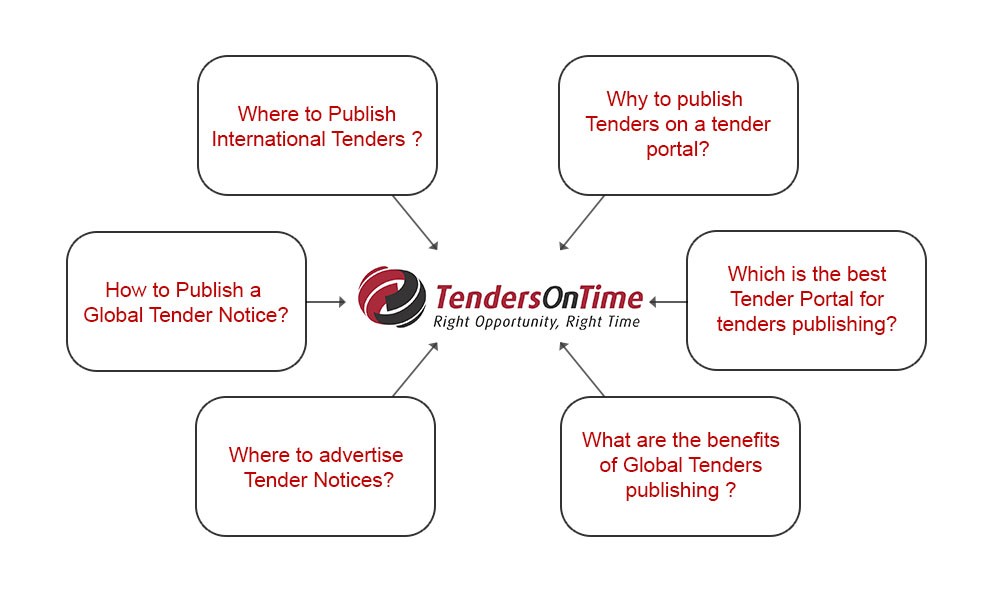Login
Login
Register
Complete Your Profile
Change Password
Request a Password Reset
Download Documents
Download Documents
Get Help to Participate in This Tender
Change Password
For better security, update the account password.
Home > E Tenders - Process, Benefits and Tips
The popularity of eTenders is increasing day by day due to many government and private institutions opting for them instead of the traditional tenders. Advanced technology makes it possible to complete the entire tendering process online through e tender. Let us understand in-depth about the process of eTendering, its advantages and how to apply for eTenders.
What are eTenders?

eTenders or electronic tenders are an internet based process of floating tenders and receiving quotes. The entire process of tendering right from the advertisement of the tender to the selection of vendors is done online. eTenders are preferred by most government and private organizations because of their transparency, speed of execution, efficiency and cost savings. e tenders allow these organizations to reach to vendors throughout the world and get the best solutions to address their issues. Moreover, increased competition among different vendors ensures that these organizations get the most competitive rates.
Types of eTender
The type of tender depends on the nature and complexity of the project, the expertise needed to handle the requirements of the project and the applicable tendering regulations. Some common types of tender include
Open Tenders
Open tenders are the most common type of tenders by Government, Private and not-for-profit organizations. The tendering authority publishes the advertisements for tender on the official website. The advertisement consists of the key information about the project, last date for submission of tender application, requirements to qualify for the tender, Earnest money requirement, documents to be submitted along with the tender, and other relevant information. Open tenders are published on the websites of the organization issuing the tender, procurement pages of Government organizations and on tender portals.
Selective Tendering
Selective tendering is an offer calling bids from only a few selected vendors. This is done to improve the quality of bidding and reduce the time taken to evaluate the bids. The concerned authority publishing the tender document shortlists a few vendors beforehand and sends the tender document only to these selected vendors. This process is used for certain projects that require huge expertise and experience.
Negotiation Tendering
Negotiation tendering is used for projects, which require specialized services. They are more common in construction and engineering. The client approaches a contractor directly and negotiates for the price and other terms of the project. This process is usually used for a single contractor and sometimes can be scaled for up to three contractors.
What is the Process of eTender

Determining the Tender Process
The organizations issuing the tenders will first decide what type of tender is to used. Once the type of tender is finalized, the next step is to determine the method of seeking information from the vendors. Some common methods of the tender process include
Expression of Interest (EOI) - Expression of interest is used to shortlist interested vendors before asking for detailed quotations. The issuing authority can then use the selective tendering process and call for tenders from the interested parties. This helps to fasten the process and get quality bids only from interested parties. EOI helps as a screening process before accepting tenders.
Request for Information (RFI)- Request for Information is used to collect information about the requirements of the project and the solutions offered by vendors to meet the requirements. It is a preliminary document that enables organizations to understand project requirements and vendor capabilities. The organization can then determine the next steps in the tendering process depending on the requirements.
Request for Proposal (RFP)- Request for Proposal is a document that asks for a specific action plan of vendors to manage a project. It contains clear information about the different challenges in the project, the business goals of the project and the time limit for completion of the project.
Request for Quotation (RFQ)- Request for Quotations is a more specific document that mentions the exact requirements of the organization and asks the vendors to quote their prices to provide the product with exact specifications as mentioned in the RFQ. while the RFP gives creative freedom to the vendors to provide innovative solutions, the RFQ does not provide any scope for innovation.
Preparing the Request for Tender

Once the tender process is determined, the issuing organization will then prepare a tender request. The request for tender consists of relevant information about the project and the process of submitting the tenders. Some common elements that are included in a request for tender are
Publishing the Tenders

The next step is publishing the tenders. Government tenders are published in the official websites of the government or the specific departments issuing the tender. Tenders from Private organizations are published on their website. Some public and private organizations also subscribe to the services of tender portals, to reach global suppliers and get competitive bids. These tender sites have a comprehensive database of suppliers and ensure that the tender advertisement reaches the targeted suppliers. Hiring the services of an e tender portal also helps organizations to reduce costs and get expert guidance for their tender project.
Receiving Tenders
Once the eTender is published, the issuing authority will then receive the response from the interested suppliers.
Evaluation of the Tender and Selection
After the deadline to submit the tenders is over, the issuing organization will check each tender for compliance with the guidelines and evaluate it on the basis of the evaluation criteria. The tenders are shortlisted and the vendors are notified. The organization will then ask for additional information if anything is required to aid in the decision-making process. Any negotiation regarding the price and deliverables are undertaken with the shortlisted vendors. The action plan and other important parameters are compared to select the winner.
Notification
The winning vendor is notified in writing and the contract is awarded.
Tips to Choose a Portal for E Tendering
Choosing a reliable e tender portal is very important to ensure that your tender notice reaches to global suppliers. Here are some tips to choose a good tender website that offers comprehensive solutions at competitive prices.
Global Reach

It is always preferable to choose a tender portal with a global reach. This ensures that your invitation to tender reaches multiple suppliers across the world. Choose a partner with country specific tender portals to ensure that your tender notice reaches the local markets of various countries. You can get competitive bids and exposure to innovative solutions to solve your problems or to handle the project requirements.
Targeted Suppliers
The tendering portal should have targeted reach. It should be able to send the tender details to the relevant supplier in its database. This allows you to ensure that your tender notice reaches to the specific audience. Some portals also provide email alerts to the suppliers in the database whenever there is a new tender that matches their capabilities.
Proactive
The e tender portal should have a proactive approach and offer superior service to the clients. They should understand your exact requirements and suggest suitable solutions to suit the needs and budget of the organization. The portal should work in collaboration with your organization and ensure that your tender project is successful.
Multiple packages
The requirements of business organizations are not the same. The portal should provide multiple packages that are suitable for organizations with different size, requirements and budgets.
Benefits of e Tenders

Many organizations feel that etendering is a cumbersome and complicated process. However, the benefits of e tendering are far too many and you will not regret the decision of adopting the online tendering process.
Reduced Costs
E tendering helps you to reduce costs associated with the traditional tendering process. For example, it reduces the costs of publishing a tender notice in newspapers and trade journals. The cost of publishing e Tenders amounts to a fraction of newspaper advertisements. Moreover, it also reduces the cost of paperwork and eliminates duplicate spending.
Transparency
E tendering process is transparent. It helps to avoid corruption and mismanagement. You can easily ensure that the procurement procedures are aligned with your business policies. There is less scope of malpractice with online tendering.
Increased Productivity
No Paperwork

E tendering eliminates the need for tiresome paperwork. Everything is stored online in the electronic format. This process makes it easy to store the documents and also retrieve them whenever necessary.
Increased Speed
E tenders increase the speed of the whole tendering process. Since every step in the process is done online, there is no waiting period between different steps. You can publish the request for tender and start receiving applications almost immediately. Every other step in the process can be carried out swiftly with the help of automated processes.
Live Tender
Unlike in newspapers and journals, where your tender can be seen only for a day, floating your tender document on a website allows you to keep it live until the deadline. This will help you to reach more suppliers who can provide innovative solutions.
Standardized Process
Adopting e Tendering helps to standardize then buying process throughout the organization. Different departments of the organization can collaborate seamlessly and maintain the standard procedures for the procurement of different products and services. That is the reason most of the govt tenders are going online.
Low Scope of Errors
There is less scope of manual errors during the tendering process. As the majority of the tasks are done electronically, it is easy to compare different documents and statements whenever required to ensure accuracy.
Proactive Approach
Online tendering is very proactive unlike newspaper publishing, which is reactive. You can instantly make any changes, post addendums and corrigendum, and upload soft copies of the tender documents. Moreover, there is no limit on the size of the tender notice.
What is the Process of Applying for e Tenders
The process of online tendering is simple and fast. Here is the step-by-step procedure of the e tendering process.
Pre-registration
The first step in applying for e Tenders is to apply for a pre-registration. Government e Tenders in India require a class 3 digital signature. You have to approach a digital signature provider to complete the process of digital signature application.
Once you get the digital signature, you can proceed with the enrolment process for the eTenders. You can either choose to register directly on the eprocurement website of the Government or work with a service provider. Fill up the enrolment form on the website to get a username and password. It is advisable to register with an e tender portal as you can get regular updates about live tenders that match your capabilities.
Viewing the Tender Advertisements
You have to log-in to your account using the username and password, regularly to view any tenders published recently. You can also opt to receive notifications from your service provider, whenever new government eTenders are published.
Submitting the Tender

Once you view the tender advertisement and ensure that you meet all the qualifications necessary to apply for the tender, the next step is submitting the quotation. You have to pay the necessary fee and download the tender document from the website. You have to fill the tender document with correct information and submit it to the concerned department, who called the tender. Ensure that you attach all the necessary documents along with your tender. You can store the scanned copies of your documents and certificates online, and use them whenever required.
You should also submit Bank Guarantee, demand draft or Bankers cheque as Earnest Money Deposit along with the tender application. You can upload the scanned copies of these documents initially, and submit the originals when the bidding process opens.
However, you have to submit the tender quotation well before the deadline, to ensure there is no last minute rush. Most of the times submitting at last minute results in unwanted confusion.
Tips to Make Your Tender Stand Out from Competitors

The organization issuing the tender advertisement receives many tenders from prospective suppliers. It is essential to prepare an impressive tender to ensure that your proposal stands out from the rest and impresses the evaluators. Here are some tips to write an impressive tender proposal
Show the Client That You Understand Their Requirements
While preparing the tender, you should let the client know that you understand the requirements of the project, better than your competitors. You have to go through the entire tender advertisement and make a note of the challenges faced by the client, the objectives of the project, and the overall goals of the organization. This will help you to analyze the big picture and suggest a suitable strategy. However, it is important to note that your proposal should be upto the point, do not fluff the tender with unnecessary marketing talk.
Show You Fit-in
You have to let the client know that you can align your services to suit the organizational goals. Do not use industry jargon while drafting the tender, use the language that your client will be comfortable. Show them that you can be part of their family and can work in collaboration with their teams.
Provide References
Let the client know that you worked on similar projects and have the required experience to fulfil their requirements. Provide references to your previous or existing clients to build confidence. Research shows that providing third-party endorsement will boost your chances of winning the project.
Offer Value Addition
Demonstrate how you can add value to the project. You have to let the client see some tangible benefit when they award the contract to you. Portray your USP and let the client know how you are different from others.
If you want to know more about e tenders, consult our experienced team. We are a popular e tendering portal with clients from across the globe. We have operations in 150 countries, with a separate portal for each country. Register with us to get access to current tenders from government and private organizations around the world.
We can also help you to publish your tender invitations online. No matter, whether it is govt tender or a construction tender, we publish your tenders on our central portal and also country wise portals to reach the local suppliers from different countries. Widen the reach of your tender notification and get highly competitive tenders from vendors. We have different packages to match the requirements of different clients. The process of publishing tenders on our portal is very simple. Contact our team today for further information.
.jpg)